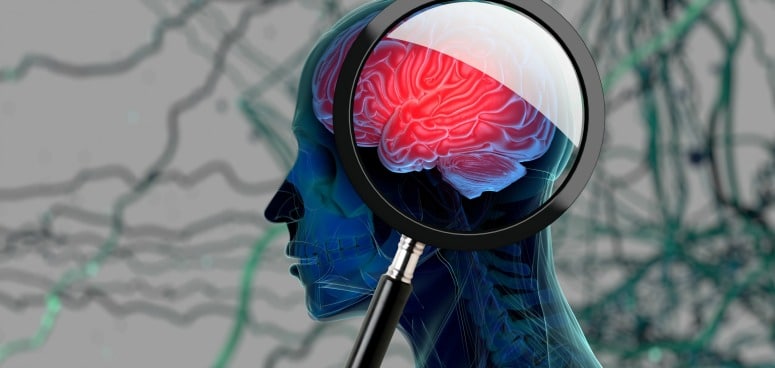Post-traumatic stress disorder (PTSD) is one of the most common psychological disorders in the United States, affecting approximately 1 out of every 6 Americans. PTSD can develop in people who have experienced trauma, and it creates significant physical and mental health problems that impact daily life. If you, or a close friend or family member, suffer from PTSD, then you can understand how challenging it is to live with this condition. However, seeking the right treatment is the first step to getting back in control of your life.
- What are the symptoms of PTSD?
- Types of PTSD
- Causes of PTSD
- PTSD Treatments
- How is PTSD Diagnosed?
- Does PTSD ever go away?
- Is PTSD a disability?
- Is PTSD an anxiety disorder?
- Is PTSD a serious mental illness?
- What makes PTSD worse?
What are the symptoms of PTSD?
PTSD is a complex disorder, and so are its symptoms.
There are four main categories of PTSD symptoms:
- Re-experiencing: A person relives the traumatic event through distressing memories, flashbacks, and nightmares.
- Avoidance: A person may become emotionally numb and avoid places, people, and activities that remind them of the trauma.
- Negative alterations in mood and cognition: A person may feel detached from others, avoid social situations, and experience negative thoughts and beliefs.
- Hyperarousal: A person may have trouble sleeping and concentrating, avoid driving, feel jumpy, and be easily irritated and angered.
Types of PTSD
PTSD is a multidimensional disorder that requires personalized treatment plans.
The most common types of PTSD include:
Acute Stress Disorder
While not the same as PTSD, it can occur in people who have been exposed to what is or what feels like a life-threatening event. Natural disasters, loss of loved ones, loss of a job, or risk of death are all stressors that can trigger acute stress disorder.
Uncomplicated PTSD
This type of PTSD is linked to one major traumatic event versus multiple events.
Complex PTSD
This type is the opposite of uncomplicated PTSD. It is caused by multiple traumatic events, not just one. Complex PTSD is common in abuse or domestic violence cases or repeated exposure to war.
Comorbid PTSD
This type is applied when a person has PTSD and another mental health condition or substance abuse issues.
Causes of PTSD
Any situation that a person finds traumatic can cause PTSD. This disorder can develop immediately after someone experiences a terrifying event, or it can occur weeks, months, or even years later.
Causes can include:
- Serious car accidents
- Sexual assault or abuse
- Natural disaster
- Domestic violence
- Crime victim
- War or combat
PTSD Treatments
The National Center for PTSD reports that symptoms can remain at a consistent level of severity if left untreated. However, a qualified mental health professional can provide many effective treatment options that pave the road to recovery. Common medications for PTSD are sertraline (Zoloft) and paroxetine (Paxil).
In addition, psychotherapy, also called talk therapy, is used to treat PTSD and includes:
- Cognitive therapy
- Exposure therapy
- Eye movement desensitization and reprocessing (EMDR)
How is PTSD Diagnosed?
To receive a diagnosis of PTSD, a person must have at least one re-experiencing symptom, at least three avoidance symptoms, at least two negative alterations in mood and cognition, and at least two hyperarousal symptoms for a minimum of one month.
A series of verbal and written tests will be administered to assess a person’s thoughts and feelings, behaviors, emotions, and traumatic experiences. These tests provide detailed information about a person’s cognitive strengths and weaknesses. After an evaluation is complete, the mental health professional completes a feedback session with you to discuss findings and treatment recommendations.
Does PTSD ever go away?
Although it may take time to feel benefits from therapy or medications, treatment for PTSD can be extremely effective, and most people do recover. It’s crucial to follow your treatment plan and routinely communicate with your mental health professional to maintain progress.
Is PTSD a disability?
Yes. The Social Security Administration (SSA) considers PTSD a disability if it meets certain criteria in the SSA’s Blue Book. A person with PTSD may be able to file a claim for disability benefits.
Is PTSD an anxiety disorder?
No. The National Center for PTSD reports that PTSD is not considered an anxiety disorder. It’s been reclassified as a trauma and stressor-related disorder.
Is PTSD a serious mental illness?
PTSD can develop into a severe and debilitating mental health disorder. If left untreated, comorbid conditions may also develop, such as depression, panic or anxiety disorders, substance abuse, or suicidal thoughts and actions.
What makes PTSD worse?
Untreated PTSD is a chronic condition that can worsen over time. There are multiple factors that make it worse, which include:
- Stress is a significant factor. It can cause crippling anxiety and trigger flashbacks, making PTSD symptoms worse.
- Aging can contribute to worsening PTSD. As you age, your body’s ability to manage stress decreases, making you more vulnerable to triggers.
- Recurring reminders of the traumatic event, such as sensory triggers of sound, smell, or sight, can also make symptoms worse over time.
PTSD Treatment at Into Action Recovery
We understand that treating both addiction and mental health is important for effective recovery. If you or a loved one needs help recovering from PTSD, we’re here to get you started on your journey to life-long wellness.
Call us today at 844-303-3969 to schedule an appointment or learn more about our programs.



